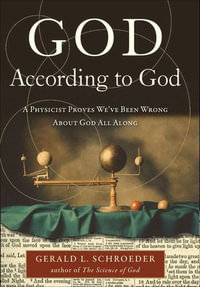
eTEXT
Quantization, Geometry and Noncommutative Structures in Mathematics and Physics
By: Sylvie Paycha (Editor), Hernán Ocampo (Editor), Alexander Cardona (Editor), Andrés F. Reyes Lega (Editor), Pedro Morales (Editor)
eText | 26 October 2017
At a Glance
eText
$169.00
Instant online reading in your Booktopia eTextbook Library *
Read online on
Not downloadable to your eReader or an app
Why choose an eTextbook?
Instant Access *
Purchase and read your book immediately
Read Aloud
Listen and follow along as Bookshelf reads to you
Study Tools
Built-in study tools like highlights and more
* eTextbooks are not downloadable to your eReader or an app and can be accessed via web browsers only. You must be connected to the internet and have no technical issues with your device or browser that could prevent the eTextbook from operating.
This monograph presents various ongoing approaches to the vast topic of quantization, which is the process of forming a quantum mechanical system starting from a classical one, and discusses their numerous fruitful interactions with mathematics.
The opening chapter introduces the various forms of quantization and their interactions with each other and with mathematics.
A first approach to quantization, called deformation quantization, consists of viewing the Planck constant as a small parameter. This approach provides a deformation of the structure of the algebra of classical observables rather than a radical change in the nature of the observables. When symmetries come into play, deformation quantization needs to be merged with group actions, which is presented in chapter 2, by Simone Gutt.
The noncommutativity arising from quantization is the main concern of noncommutative geometry. Allowing for the presence of symmetries requires working with principal fiber bundles in a non-commutative setup, where Hopf algebras appear naturally. This is the topic of chapter 3, by Christian Kassel. Nichols algebras, a special type of Hopf algebras, are the subject of chapter 4, by Nicolas Andruskiewitsch.
The purely algebraic approaches given in the previous chapters do not take the geometry of space-time into account. For this purpose a special treatment using a more geometric point of view is required. An approach to field quantization on curved space-time, with applications to cosmology, is presented in chapter 5 in an account of the lectures of Abhay Ashtekar that brings a complementary point of view to non-commutativity.
An alternative quantization procedure is known under the name of string theory. In chapter 6 its supersymmetric version is presented. Superstrings have drawn the attention of many mathematicians, due to its various fruitful interactions with algebraic geometry, some of which are described here. The remaining chapters discuss further topics, as the Batalin-Vilkovisky formalism and direct products of spectral triples.
This volume addresses both physicists and mathematicians and serves as an introduction to ongoing research in very active areas of mathematics and physics at the border line between geometry, topology, algebra and quantum field theory.
Read online on
ISBN: 9783319654270
ISBN-10: 3319654276
Series: Mathematical Physics Studies
Published: 26th October 2017
Format: PDF
Language: English
Publisher: Springer Nature























